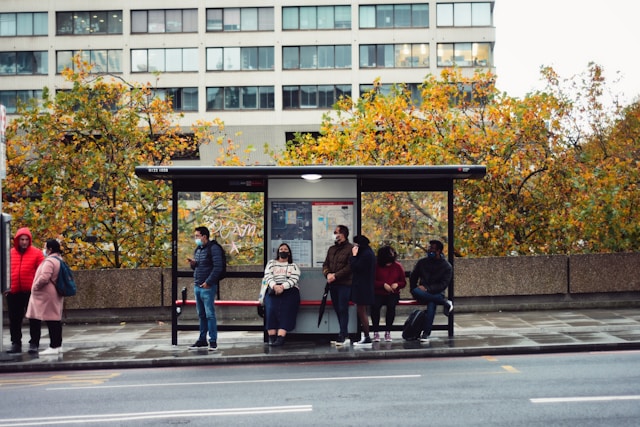
Transportation costs can be a significant expense for young professionals, especially in urban areas where commuting is a daily necessity. Understanding how to reduce transportation costs is crucial for anyone starting a career or aiming to build financial stability. By exploring various strategies and implementing practical solutions, such as optimizing routes, carpooling, leveraging public transportation effectively, or considering remote work opportunities, individuals can significantly impact their monthly budgets.
These proactive measures not only alleviate financial strain but also empower individuals to allocate resources more efficiently, ultimately contributing to a more sustainable and cost-effective lifestyle. In this article, we’ll explore various strategies and tips that young professionals can use to cut down on transportation expenses and save money in daily commute effectively.
Ways to reduce transportation costs

The first step in reducing transportation costs is to evaluate your current commuting habits and explore alternative options that could potentially save you money. This proactive approach lays the foundation for implementing practical strategies that align with personal financial goals and sustainability objectives.
Public Transportation
Utilizing buses, trains, or subways can often be more cost-effective than driving, especially when factoring in parking fees, fuel costs, and maintenance expenses.
Carpooling
Sharing rides with colleagues or friends can significantly reduce fuel expenses and vehicle wear-and-tear. Many cities also offer carpool lanes, which can save time as well.
Cycling or Walking
Consider incorporating biking or walking into your daily commute if feasible, as this not only reduces transportation costs but also enhances physical fitness levels, contributing positively to overall health and well-being.
Telecommuting
Negotiate with your employer for remote work options if your job allows it. Working from home even a few days a week can lead to substantial savings on transportation costs.
Choose Housing Strategically
Where you live relative to your workplace can greatly impact transportation expenses
Proximity to Public Transit
Consider renting or getting a PG within walking distance of a bus or train stop to reduce reliance on personal vehicles.
Avoid High-Cost Areas
Living in the heart of a city may be convenient but could come with higher living and transportation costs. Explore suburbs or quieter neighborhoods with lower rent or housing prices.
Shared Housing
If feasible, consider shared housing arrangements to split costs and potentially live closer to work or public transit options.
Optimize Vehicle Use
If you must use a personal vehicle, there are several ways to optimize its use to minimize costs
Maintenance
Regularly maintain your vehicle to ensure optimal fuel efficiency and prevent costly repairs. Simple tasks like regular oil changes, tire rotations, and proper tire inflation can improve gas mileage.
Fuel Efficiency
Choose a fuel-efficient vehicle if purchasing new or consider trading in for a more economical model if your current vehicle is a gas guzzler.
Driving Habits
Practice fuel-efficient driving habits such as smooth acceleration and deceleration, reducing idling time, and maintaining a steady speed on highways.
Utilize Technology
Modern technology offers various tools and apps that can help young professionals save on transportation costs
Ride-Sharing Apps

Use ride-sharing apps to split costs with others or take advantage of shared rides to reduce expenses.
Public Transit Apps
Apps like Google Maps or transit-specific apps provide real-time schedules, routes, and sometimes even discounts on fares.
Gas Price Trackers
Use apps that track gas prices in your area to find the cheapest fuel options.
Car Maintenance Apps
Apps that remind you of maintenance schedules and provide tips on vehicle upkeep can prevent costly repairs and improve longevity.
Financial Strategies

Managing transportation costs can also be approached from a financial planning perspective
Budgeting
Allocate a specific amount of your monthly budget to transportation expenses and stick to it. Use budgeting apps to track your spending and identify areas where you can cut back.
Pre-Tax Benefits
Take advantage of employer-sponsored benefits such as pre-tax commuter programs or transportation reimbursement plans.
Cost Sharing
Share costs with family or roommates when feasible, whether it’s splitting gas and maintenance costs or sharing a vehicle.
Long-Term Planning
Looking ahead can empower young professionals to make informed decisions about their transportation needs, ensuring they can answer the question, How can I spend less on transportation?
Career Growth
Consider how your career path might impact your commuting needs in the future. Changing jobs or career advancements could necessitate a reevaluation of transportation options.
Vehicle Ownership
Assess whether vehicle ownership aligns with your long-term goals. In some cases, renting or using alternative transportation methods may be more cost-effective.
Sustainable Options
Explore sustainable transportation alternatives such as electric vehicles, which may have higher upfront costs but lower long-term operational expenses.
Educate Yourself
Stay informed about local transportation policies, incentives, and developments that could impact your commuting costs
Government Programs
It is beneficial to check for government subsidies, grants, or tax incentives that may be available for transportation expenses or vehicle purchases. Many governments offer various financial aids aimed at promoting sustainable and cost-effective transportation solutions.
Community Resources
Local community centers or organizations may offer workshops or resources on budgeting, transportation options, or vehicle maintenance.
Networking
Engage with colleagues or peers to share tips and strategies for reducing transportation costs. Learning from others’ experiences can provide valuable insights and new ideas.
Environmental Impact
Reducing transportation costs often aligns with reducing environmental impact
Eco-Friendly Practices
Opting for public transit, carpooling, biking, or walking reduces carbon emissions and supports sustainability efforts
Corporate Sustainability
Encourage employers to promote sustainable commuting practices through incentives or partnerships with green transportation providers.
Benefits of Public Transportation

Public transportation offers numerous benefits beyond cost savings
Environmental Impact
By reducing the number of individual cars on the road, public transit helps lower greenhouse gas emissions and improve air quality.
Cost Efficiency
Public transit is often more cost-effective than driving, especially when factoring in parking fees, fuel costs, and vehicle maintenance expenses.
Reduced Stress
Commuting on public transportation can be less stressful than driving, allowing you to relax, read, or catch up on work during your commute.
Community Connection
Using public transit can foster a sense of community by connecting you with fellow commuters and local businesses.
Conclusion
Reducing transportation costs for young professionals involves a combination of lifestyle adjustments, strategic planning, and leveraging available resources. By evaluating commuting options, optimizing vehicle use, utilizing technology, and staying informed about financial strategies and long-term planning, young professionals can significantly decrease their transportation expenses.
Moreover, embracing eco-friendly practices not only saves money but also contributes to a more sustainable future. With careful planning and proactive decision-making, young professionals can achieve financial savings while maintaining flexibility and convenience in their daily commute.
Also read about the best side hustles to explore for young professionals.


